After the threat of frost has passed, hit the garden armed in your toughest clothes and sharpened pruners for the annual task of cutting back the roses. While gardeners may share different insights on the art of rose pruning, one thing is certain: While roses’ winter dormancy persists, it’s time to prune, ensuring a prolific bloom and healthy plants in spring and summer.
Cynthia Chuang, president of the Santa Clara County Rose Society in California and an ardent rosarian since 1994, considers this routine essential to the health of her award-winning roses. Most of her January days are spent outside, pruning and tidying her 200 roses. And every May she and the neighborhood relish the bounty.
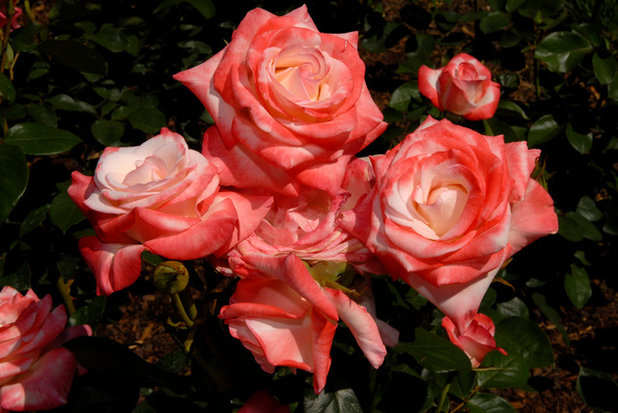
The New York Botanical Garden
Why prune? Pruning is regenerative. It stimulates new growth and can enhance and open up the form and shape of the plants, Chuang says. It also removes dying or diseased portions that can damage the overall health of a garden. Roses are sturdy and forgiving, and will be healthier plants because of it. While you may not prune perfectly every time, it’s always better to prune than not to prune.
When to prune. Prune roses during their dormancy, before they send out new growth. In mild climates, this means mid-December through February. In more extreme climates, wait until the final threat of frost has passed. Otherwise you run the risk of damaging canes.
Shown: Hybrid tea rose
Rosa 'Gemini'
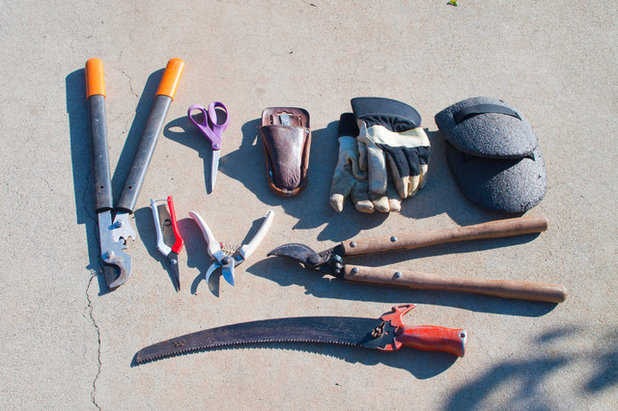
Janet Paik
Tools and gear. Chuang spends about 20 minutes pruning each shrub. Make sure you’re comfortable and well equipped. You want to enjoy the time you spend outside in preparation for spring.
- High-quality rose pruners (sharpen often; Chuang applies WD-40 weekly)
- Loppers (for larger-diameter canes)
- Pruning saw (for old canes and canes too big for loppers)
- Scissors (for detail work)
- Heavy-duty gloves
- Eye protection
- A long-sleeve shirt and pants made of a sturdy material
- Knee pads or bench (optional)
- Pruner holster (optional)
Tip: Sanitize tools with rubbing alcohol after contact with diseased plants.
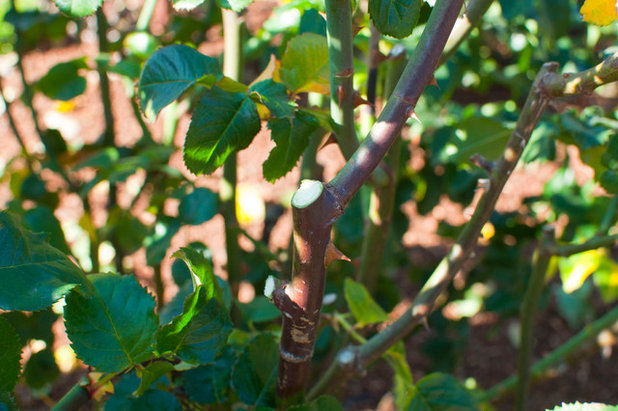
Janet Paik
Here Chuang has pruned 1/4 inch above a thick, healthy and outward-growing cane. The cut is angled out in the direction of growth and will promote an open, rounded plant.Make the cut. Rosarians may disagree on how much to prune, when to prune and what to prune, but they unanimously agree that the cut itself is important in promoting rose health.
- Cut 1/4 inch above an outward-facing bud eye. Locate an outward-facing bud eye on a thick, healthy cane. A bud eye occurs just above the junction of a leaf (Chuang suggests five-leaflet leaves) and the cane — or at a dormant eye. The dormant eye is where a leaf used to be and resembles a swelling band. Leaving the leaves on the bush until the end of pruning makes it easier to identify where to cut. The cut signals the bush to send water and nutrients to that part of the bush. New growth will emerge from the bud eye in the direction of the cut.
- Cut at a 45-degree angle with the direction of leaf growth, away from the bud eye. This is the direction in which the new growth will emerge, so you will be promoting an open and outward-facing shrub. The angle also directs sap and water away from the bud eye, and naturally seals the cut. (Some rosarians suggest sealing cuts wider than a pencil with a sealant like Elmer’s Glue to prevent borers.)
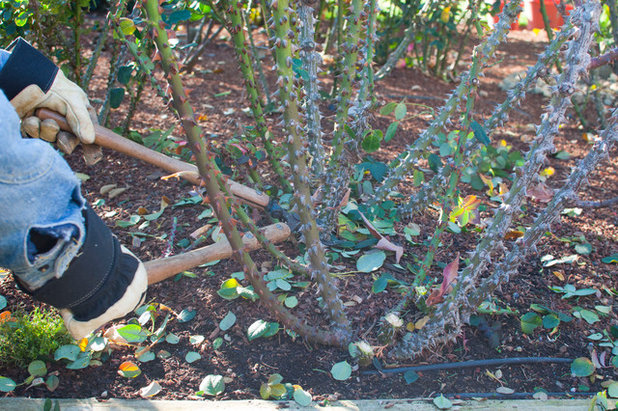
Janet Paik
Chuang's husband, Chi Ning Liu, cuts off a woody, central cane at its origin. This allows younger, healthier canes to thrive and opens up the center of the rosebush, promoting airflow and circulation.How to Prune RosesWhile expert demonstrations, extensive reading and planning are helpful preparation for pruning, nothing educates you like hands-on experience. You may prune too much or too little, but roses are resilient, and they’ll grow back.
Leave healthy, major canes. First, cut off dead or dying canes to their origin. Get in there with the saw if necessary, says Chuang. The sure sign of a healthy cane is a rich green bark and a solid white core. Older rosebushes may get woody, so pick and choose the canes that you would like to keep. The American Rose Society suggests leaving four or five major canes for hybrid teas and grandifloras; more for floribunas. Cut off dying canes, even if healthy canes shoot off them.
You want to ensure a healthy rose plant, above all. Then you want to think about shape. Chuang says she’ll cut canes smaller than the diameter of her pinkie finger. New growth will be thinner than its origin, so thin stems will produce even thinner, weaker stems, unable to support the weight of the rose.
Tip: If you cut healthy canes off, put the stem in the ground and stake it. The stem may sprout roots and form a secondary plant.
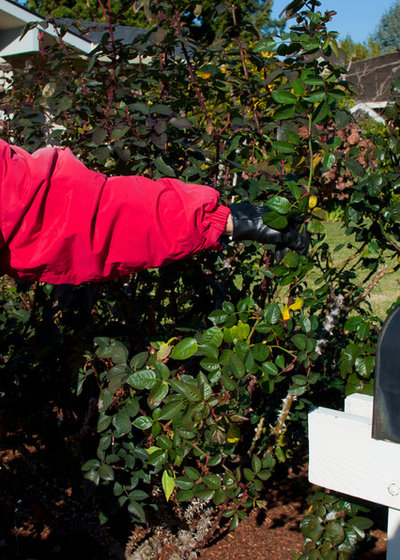
Janet Paik
Remove suckers. Many roses are grafted onto a root stalk of another rose type. Beneath the joint (bud union) is the root stalk, and above is the rose variety you are growing.
Every once in a while you will see a vigorous straggler growing straight from the root stalk — these are suckers. Suckers have different leaves and a different form than the bush and need to be yanked from the base as soon as possible. Otherwise the rose bush will waste precious energy on the unwanted sucker.
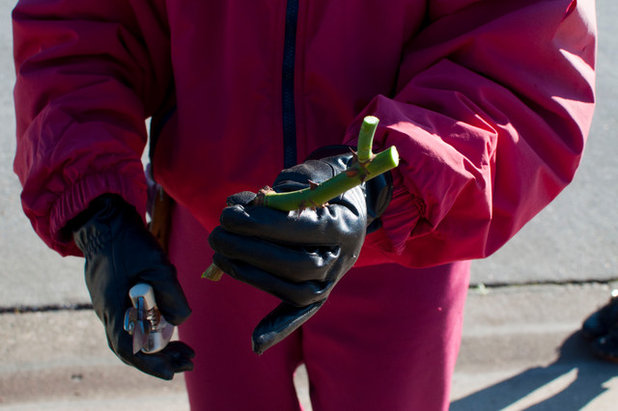
Janet Paik
Tip: When pruning, keep an eye out for Y-branches. Chuang uses these as spacers between stems that are close to crossing as a guide for open growth (see next photo).
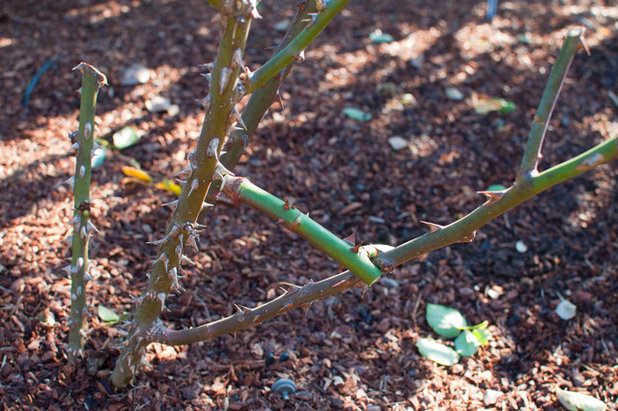
Janet Paik
A spacer opens up the base of the plantMaintain an open form. While pruning, think about the final form of your rosebush as an upright, open hand or vase. You want canes to radiate up and out from the center, ensuring airflow and circulation, and preventing mildew and disease.
Canes that cross the center of the plant or cross another, healthy cane should be pruned. Thin out portions of the plant that have become too dense, all the while remembering the pinkie rule and the outward-facing rule. This is your opportunity to guide the form of your plant.
If too many stems originate from the same part of the cane (Chuang says three or more), or if you notice too many bends and previous cuts in the cane, cut them back.
Avoid having too much of the rosebush in the shade — even its own shade. Ideally, plant rose bushes 3 to 4 feet apart. Think about the sun pattern when pruning; if you have to decide between keeping one of two canes, cut the one that will spend more time in the shade.
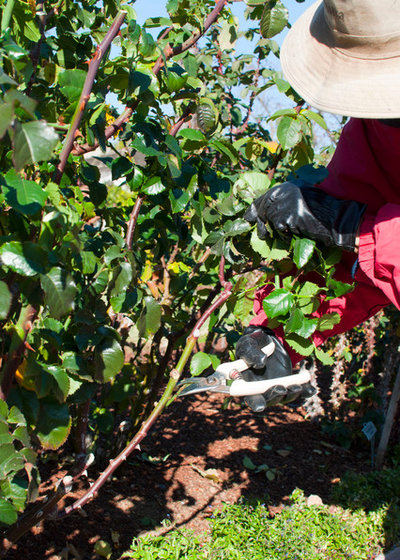
Janet Paik
Cut one-third or one-fourth off the top. While there is not a steadfast rule, Chuang says that she aims to cut off a third to a fourth of a bush’s overall height when pruning.
She says she often sees roses cut too short, which can inhibit the bush’s ability to regrow or regenerate, because too much of its energy has been removed. Alternatively, if you prune too little, the plant will not rejuvenate, and you will end up with a spreading, unkempt plant that will not produce as well.
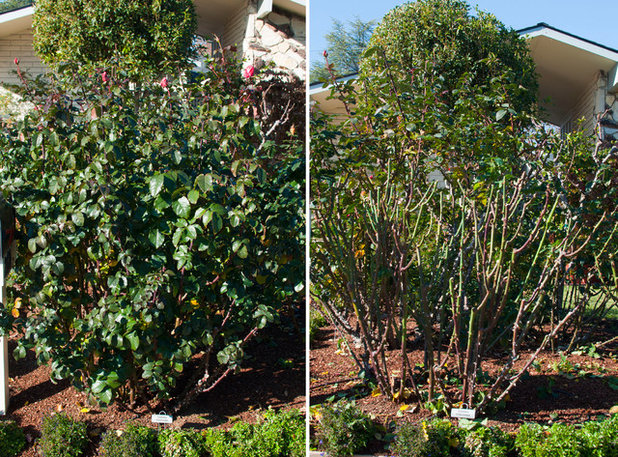
Janet Paik
Strip leaves after you prune. Some rosarians strip leaves before pruning, but Chuang says leaving them on until after pruning makes it easier to identify the direction of growth when making your cuts. Removing leaves eliminates pests or diseases that may be growing on the plant. If you notice rust or mildew later in the year, simply strip the leaves to prevent spreading.
Shown: Hybrid tea rose
Rosa 'Barbra Streisand' before pruning (left) and after (right)
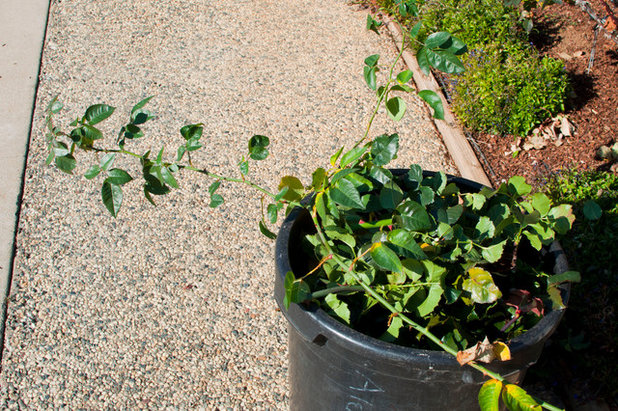
Janet Paik
Clean up. Remove all fallen leaves and surrounding plant debris. Rose debris is typically not composted, as it doesn't break down quickly, and residual disease and fungus may still live on the leaves. Discard the debris as soon as possible to avoid the spread of any infections.
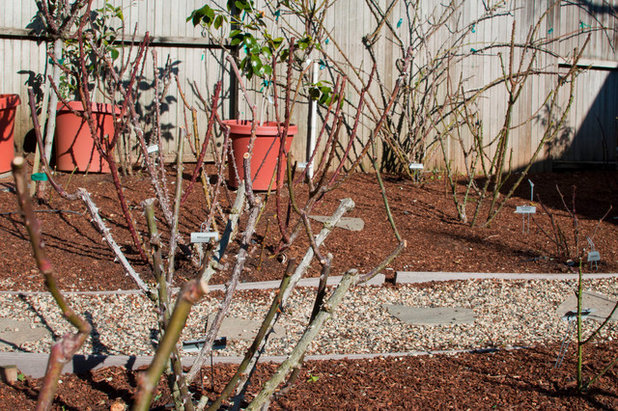
Janet Paik
What to Do After PruningSpray. Chuang says two sprays following pruning are key to a healthy plant over winter and into spring. Spray the canes heavily all the way to the ground and even the surrounding ground. Spray from the top down and let the spray blanket the shrub.
- Apply a dormancy spray when you will have at least three days without rain and at least 24 hours without freezing temperatures. Dormancy oil is a horticultural oil that smothers pest eggs that may reside on last year’s leaves, canes and the surrounding dirt. Follow the directions on the package. While it’s not necessary to spray immediately after pruning, the sooner you do, the sooner you will eliminate possible pests.
- One week later, apply a mixture of dormancy oil and sulfur. The sulfur will smother fungus spores.
Fertilize one month later. Chuang places a ring of a fertilizer blend around the base of each bush, consisting of:
- Alfalfa pellets
- 3/4 cup slow-release fertilizer
- 4 to 5 cups chicken manure
Water well after fertilizing.
The first blooms emerge in Chuang’s garden in mid-April, with the big show coming in mid-May. If you continue to lightly prune throughout the year, Chuang says, you can expect up to five repeat blooms per rose a year, depending on variety.
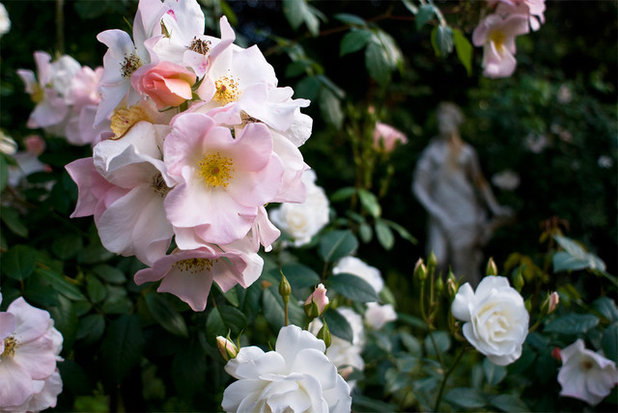
Lenkin Design Inc: Landscape and Garden Design
Climbing Sally Holmes RoseTips for Specific Rose Types:- Climbers: Bend and tie the canes, arching slightly below horizontal, during dormancy. This will produce more prolific blooms. Follow the pinkie rule and don’t cut back the main canes if they're still producing.
- Old garden roses: If they are single-blooming species, prune after blooming. Repeat-blooming roses can be pruned similarly to modern roses but more lightly.
- Miniature roses: Clean up the inside, creating an open, radiating shrub to promote good airflow and circulation. The stem-diameter rule does not apply, but remove any thin, spindly stems.
More: What to Do in Your Garden Now





